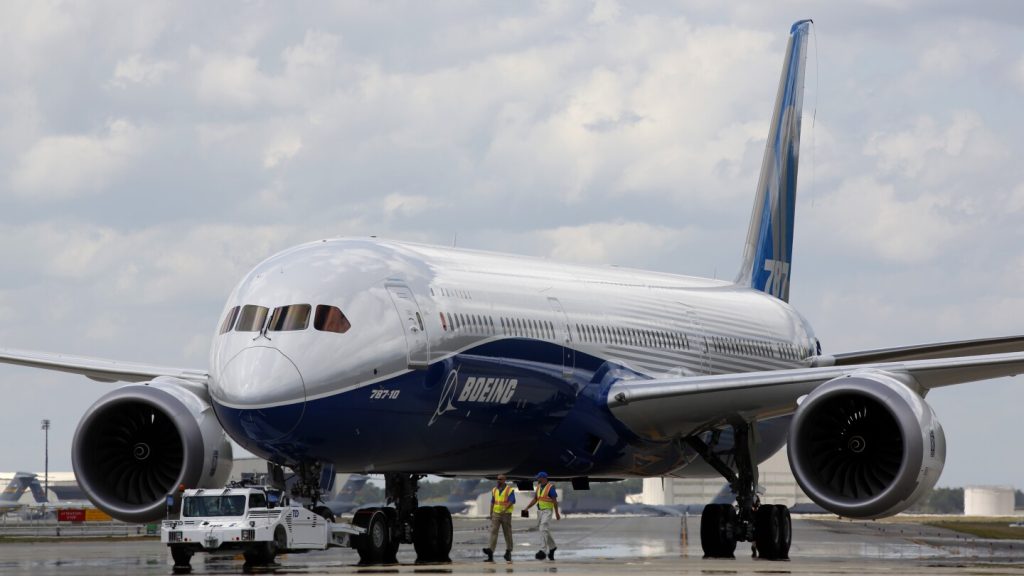Boeing is addressing concerns about the integrity of the fuselages on two of its largest planes, particularly the 787 Dreamliner. A whistleblower, Boeing engineer Sam Salehpour, raised alarms about panels on the outside of one of the planes potentially breaking apart during flight due to excessive force applied during assembly. In response, Boeing engineering executives explained in detail how panels are fitted together on the 787, highlighting the durability of the carbon-composite skin which they claim is resistant to metal fatigue. This briefing was a preemptive move ahead of Salehpour’s testimony to a congressional panel.
The Boeing officials revealed the meticulous process of fitting fuselage sections together, ensuring gaps are filled with shims, holes are drilled and cleaned, and fasteners are attached to maintain a minuscule margin of .005 inches. They addressed a gap issue discovered in 2019 between two panels leading to design and assembly changes. Boeing conducted rigorous testing replicating 165,000 flights to show the structural integrity of the composite material, with no findings of fatigue. The company reported that Dreamliners already in use have undergone extensive inspections with no evidence of fatigue in the composite skins.
Despite cracks being found on metallic parts, including one above the wing-fuselage joint, Boeing issued inspection guidelines for those areas. The 787 Dreamliner, known for its composite material construction enhancing fuel efficiency, has faced previous issues such as battery fires and grounding due to gaps between fuselage panels. The FAA, responsible for inspecting and approving each 787 before delivery to airlines, is investigating Salehpour’s claims. Salehpour alleges he was transferred to the 777 program after raising safety concerns about the 787, citing workers jumping on panels to align them, a claim Boeing disputes.
Boeing expressed full confidence in the safety of both planes and highlighted their encouragement of employees to report problems. The company claimed an increase in reports from employees, with as many reports in January and February as all of the previous year. Salehpour is part of a series of Boeing whistleblowers who have spoken out about safety concerns, often alleging retaliation. The company maintains that it values employee feedback and takes safety seriously. The FAA, while not directly addressing Salehpour’s claims, emphasized its commitment to investigating all safety reports.
In light of the criticisms raised by Salehpour, Boeing remains steadfast in defending the structural integrity of its planes. The 787 Dreamliner, a popular choice for international flights, showcases the use of composite material for weight reduction and efficiency. Boeing’s detailed explanation of the assembly process and testing procedures provides insight into the meticulous quality control measures in place. The company’s response to past issues, such as grounding and inspections, indicates a commitment to ensuring the safety and reliability of its aircraft. As Salehpour prepares to testify before Congress, the aviation industry will be closely monitoring the developments surrounding Boeing’s response to the whistleblower’s allegations.
The incident has raised questions about the oversight and accountability within Boeing’s manufacturing processes, particularly regarding employee concerns and the company’s response to safety issues. The FAA’s ongoing investigation into Salehpour’s claims adds another layer of scrutiny to Boeing’s operations. The outcome of this investigation and Salehpour’s testimony could have significant implications for Boeing’s reputation and its standing in the aviation industry. As Boeing continues to address the allegations and defend the safety of its planes, stakeholders will be watching closely to see how the company navigates this challenging situation.


